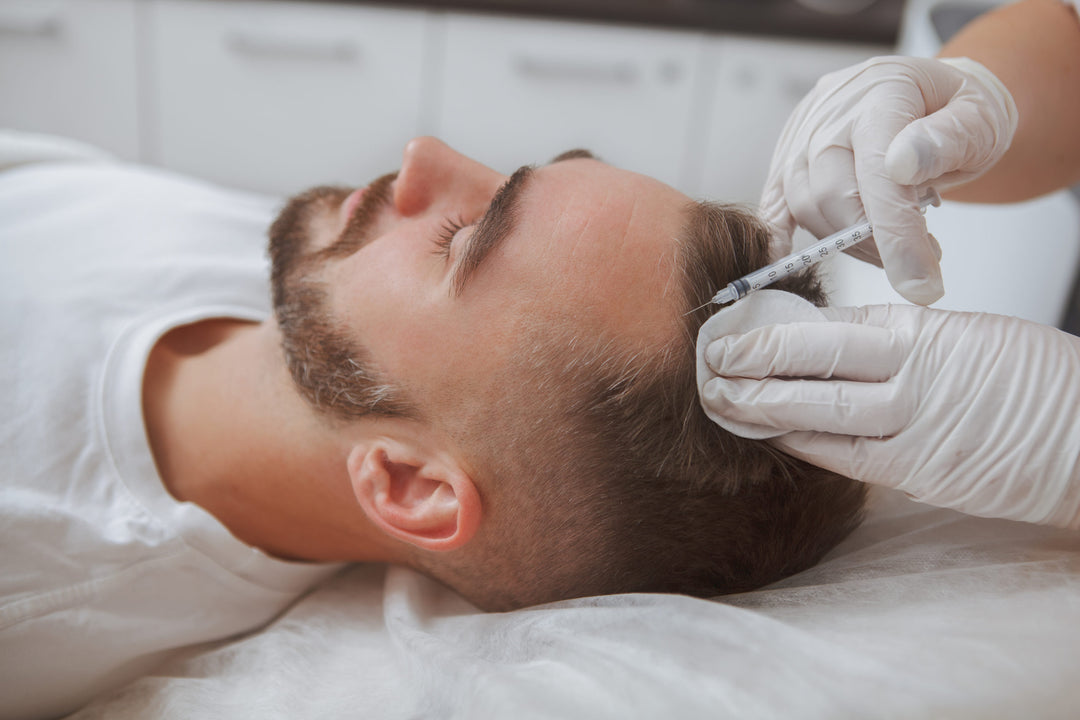
PRPHair Restoration
Hair loss PRP Treatment Overview:
Our blood is composed of two main factors. One is red blood cells and the other is plasma, which contains white blood cells and platelets, which contain many growth factors.
We are able to separate the components of the blood and re-introduce the plasma to many areas of the body, stimulating growth factors. One of these areas is the scalp and hair follicles.
There are several possible outcomes when platelet-rich plasma is used for hair recovery:
Re-stimulating hair growth cycle
Stopping the spread of baldness
Thickening existing hair
PRP injections are all natural and have been found to stimulate regrowth of hair and reduce the effects of thinning regardless of when the balding started. How does it work?
There is a process involved in PRP. It can be broken down into two steps.
1. It starts with blood being drawn from the patient’s arm. There is a machine called a centrifuge that spins the blood around to separate red blood cells from the plasma.
2. After 10 minutes or so, the blood will be separated out into red blood cells, platelet poor plasma, and platelet rich plasma.
3, platelet-rich plasma is re-injected into the area where we desire effects using a syringe. In the case of hair re-growth, this is the patient’s scalp at the level of the follicles.
Treatment is usually finished in about 30 minutes.
Will insurance cover it?
Most of the time, PRP for hair loss is considered a cosmetic procedure and will not be covered by your insurance. Check with your specific provider to see if it would be covered for you.
Recovery Process
PRP treatments take about an hour and there is no recovery process needed. Patients are able to resume normal activity straight from leaving the office.
PRP for hair loss side effects
Any treatment that involves injections carries the risk of certain side effects like infection, scar tissue, calcification, and injury to blood vessels and nerves.
Anesthetic is sometimes used, which has its own risks. If you have a known intolerance to anesthetics, let your doctor know so that it can be taken into consideration.
Your initial consultation will uncover many of the situations in which PRP for hair loss is not recommended. Some of these include being on blood thinners, smoking heavily, or a history of drug abuse. There are some other conditions that would disqualify you from PRP. Your doctor will check your medical history and let you know if they think you could be at risk.
How many visits are needed?
Treatments for hair loss are performed at monthly intervals for 3-4 treatments and then once every 4-6 months after that to keep results and re-growth active.
Hair loss in the United States
Hair loss currently affects over 50 million men and 30 million women in the United States.
How does hair loss happen?
Hair loss happens naturally with age in many people. When it starts is something that changes from person to person, but the risk does increase as you get older.
For some, the balding and receding hairline can start as early as puberty. By age 50, 50% of men are affected by hair loss and balding. By Age 70, 40% of women are affected.
Note: A consultation is required to determine eligibility for all treatments. If you are not a candidate for any service purchased, you will receive a refund or credit toward another service.
This purchase is for a service or product that must be redeemed or picked up locally at either of our locations.
Pairs well with

